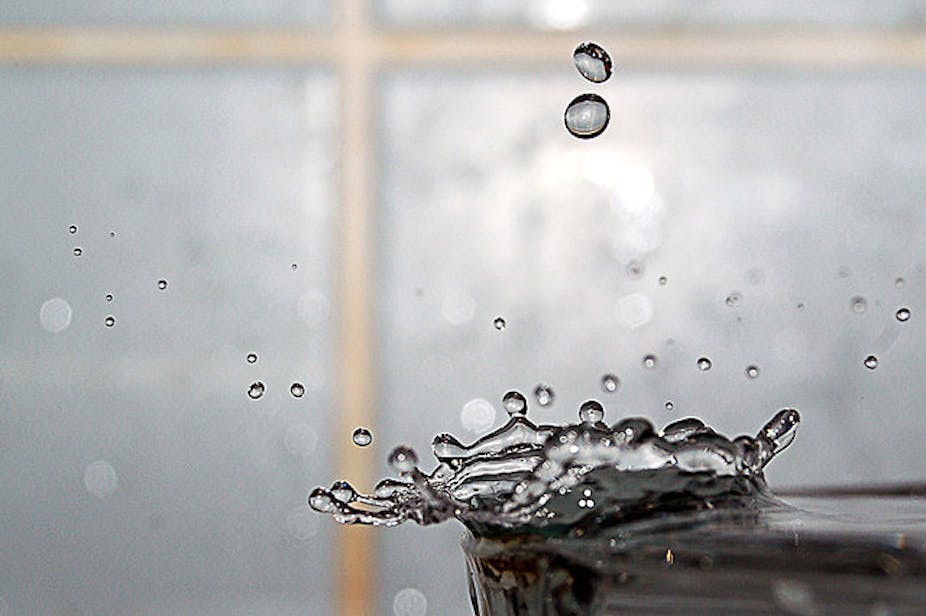Water is just water, right? To some, yes, but many consumers spend inordinate amounts of time considering which brand they should buy and are willing to pay many times more than the price of humble tap water. This is despite the significant damage to both their wallet and the environment.
The global bottled water market value increased from $US63.5M in 2005 to $79.8M in 2009. It is expected to grow to $99.9M in 2014. So how has H₂O, a homogenous chemical element, become a multi-million dollar business? How has it come to be sold as a differentiated product at distinct price points and be shipped all around the world?
It’s all in the bottle and its branding. Bottled water provides a level of perceived convenience not enjoyed by tap water. For the busy consumer, buying a one-time use bottle of water seems easier than carrying and refilling. A clever combination of branding and packaging also plays a part in its success. Through design, bottled water communicates desirable values like health, purity and exoticism. The key factor is the ability of the bottle’s design to symbolically bestow social status upon the consumer.

Bottled water first gained these desirable values in the 18th and 19th centuries. In Europe, the unique mineral compositions of springs at water hospitals or spas were used to cure ailments and maintain the health of the wealthy. People began to take the healthful waters home with them, thanks to the development of machines that could manufacture and fill the bottles.
The symbolism and culture of the spas remains a vital part of the marketing strategy of many brands today, as a visit to the supermarket reveals. Bottled water packaging lined up on the shelves is a wealth of imagery.
Mountains, springs, and lakes in shades of blue and white symbolically express purity and health. This is still the strongest selling point, helped by the onset of the obesity epidemic in the 1980s.
In the face of increasing competition, water brands have diversified into the luxury market. Bottle designs have begun mimicking the shape of wine bottles and along with a growing number of water bars and water sommeliers, bottled water has created a culture of high social status that rivals the wine cellar.

The image of health and luxury is created by the marketing. A number of scientific studies indicate that there is little difference in actual health benefits derived from bottled water and tap water. In addition there is little difference between waters of individual brands.
The prevalence and power of bottled water marketing is overshadowing such findings by appealing to something of great importance to consumers, their self-identity. Product symbolism studies have shown that people draw on the symbolic values of products to not only create their self-identity, but to decipher the characteristics of other product owners.
While consumers still consider convenience when it comes to bottled water, these symbolic meanings have a particularly strong effect on consumer choice. This makes bottled water more of a fashion accessory than just something to drink.
Bottled water is coming under increasing scrutiny about its comparatively large environmental footprint. The plastic bottle is a major target of criticism. In an effort to improve this new negative image, water brands have used the design of the bottles to symbolically express environmental friendliness. They have begun using alternative materials like bio-degradable plant based plastics, recyclable cartons and tetra-paks.
Marketing is also using the symbolism of colour to express its new eco-conscience. Green is now common on bottled water packaging along with messages on the labels about environmentally friendly practices.

While water brands use environmentally friendly symbolism to appeal to consumers’ concerns about the environment, many consumers are not convinced and shun the product. Happily, these concerned consumers have recently found allies in some government agencies.
From Venice to New York, municipal water suppliers have begun handing out their own branded bottles which allow for easy refill from any domestic tap. This move by municipal suppliers to “fight fire with fire”, or in this case “water with water”, is a tribute to the power of design of the bottle. The bottle gives the company the ability to differentiate water and give it unique appeal though packaging and graphic design.
The bottle has given water brands an edge over tap water. Though with municipal water suppliers beginning to utilise the convenience and symbolic appeal of the bottle, water brands could be facing some tough new competitors.

